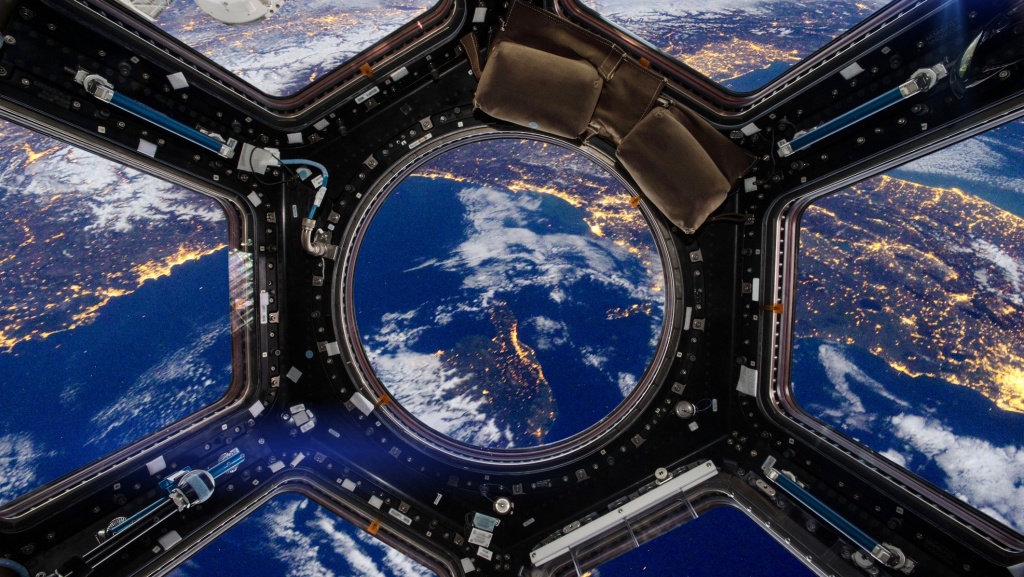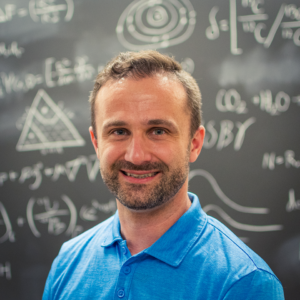Space Tourism
Enabling a Space-Faring Civilization
Kirby Runyon
CEO, Planex
Sponsored by PSW Science Member Joe Schulman
About the Lecture

The launch of billionaire Dennis Tito to the International Space Station aboard a Russian Soyuz rocket in 2001 marked a significant milestone and began a new era in the development of the space tourism industry and a space-faring civilization. In some ways it was a culmination of a space tourism economy that had been functioning long before then, here on earth, and that continues growing today in its sub-space realms.
There is a lot more to space tourism than going into space per se. It includes all types of space-themed entertainment and leisure travel. Star gazing sessions and attending lectures at the planetarium are very affordable and common forms of space tourism, for instance. Space themed movies and TV series abound. Science fiction about space is extremely popular. There are tours to explore places on earth that resemble the landscapes of other planets. And higher up, companies such as Zero-G allow the adventurous to flip, float, and fly in apparent zero gravity like astronauts do in space.
But human access to space (that is, above the von Kármán line, 62 miles up) as a commercial (non-government) enterprise arguably began in 2021: first with the sub-orbital flights of Richard Branson and five others using Virgin Galactic’s Space Ship 2, then with Jeff Bezos and three others using Blue Origin’s New Shepard, and then with the 10-day orbital flight of Jared Isaacman and three other non-space professionals aboard a SpaceX Dragon capsule 100 miles higher than the International Space Station. With Blue Origin resuming sub-orbital tourist flights, the launch of SpaceX’s Polaris Dawn mission, and companies like Space Perspective beginning test flights of its ultra-high altitude “space balloon” for consumer flights next year, the opportunities and the cadence of tourist travel to space is on the cusp of rapid increases.
There are many ways now to experience the dream of space flight in very visceral ways, especially for those with the resources necessary for the more expensive options. And with all the fun, there are also opportunities for novel scientific research.
This lecture will discuss the current landscape of space tourism and where it is likely to go in the next 15 years.
Selected Reading & Media References
VirginGalactic.com
BlueOrigin.com
SpaceX.com
Space Tourism Conference
About the Speaker

Kirby Runyon is a planetary geologist, space tourism consultant and tour guide, zero gravity coach, and public speaker.
His research focuses on the rocky landscapes of the Moon, Mars, Pluto, Venus, asteroids, and other rocky worlds. He uses both spacecraft images and experiments, including those in reduced gravity parabolic flight, to understand the geological consequences of impact cratering, volcanism, and windblown sand. His current research involves geologic mapping of large lunar impact basins, assessing the erosive potential of crater ejecta emplacement, and working in astronaut-enabled science.
Since 2020 he has led groups to the American southwest to explore planetary analog terrains, commonly focusing on the Moon- and Mars-like terrains of New Mexico; and, since 2021 he has been a zero gravity coach, contracting with The Zero Gravity Corporation (Zero-G). His clients have included Virgin Galactic ticket-holders and private astronauts. With Galactic Medallion he co-leads educational trips to the Kennedy Space Center. His work has been featured on the BBC and in the Washington Post, the New York Times, USA Today and others.
Among other honors and awards Kirby is the recipient of a NASA Group Achievement Award for his work on the team of the New Horizons mission to the PLANET Pluto. He was named Houghton College’s “Young Alumnus of the Year” and an asteroid has been named after him: “216752 Kirbyrunyon,” also known as 2005 PR23.
Kirby earned a BA in Physics at Houghton College, an MS in Planetary Geology at Temple University and a PhD in Planetary Geology at Johns Hopkins University. Upon completing his doctorate he was a postdoctoral fellow at the Johns Hopkins Applied Physics Laboratory.
Social Media Accounts
Webpages: https://planex.space and https://www.psi.edu/staff/profile/kirby-runyon/
LinkedIn Profile: https://www.linkedin.com/in/kirby-runyon-1752467/
X account handle: nasaman58
Instagram: Kirbydanielrunyon
Minutes
On September 20, 2024, Members of the Society and guests joined the speaker for a reception and dinner at 5:45 PM in the Members’ Dining Room at the Cosmos Club. Thereafter they joined other attendees in the Powell Auditorium for the lecture proceedings.
In the Powell Auditorium of the Cosmos Club in Washington, D.C., President Larry Millstein called the 2,501st meeting of the Society to order at 8:01 p.m. ET. He began by welcoming attendees, thanking sponsors for their support and announcing new members. Scott Mathews then read the minutes of the previous meeting which included the celebration of the Society’s 2500th meeting and the lecture by Marc Rothenberg, titled “Uniting All the Men of Science in this City in One Organization: Joseph Henry, the Philosophical Society of Washington, and the Status of Science in Post-Bellum Washington”. The minutes were approved as read.
President Millstein then introduced the speaker for the evening, Kirby Runyon, of Planetary Experience Consulting or Planex. His lecture was titled “Space Tourism: Enabling a Space-Faring Civilization”.
The speaker began by asking the question: “What is it like in space”, saying that this was the single question that has driven him for most of his life. He defined Space Tourism, very broadly, as “Any travel experience with a space theme; not necessarily to space.” He said that Space Tourism was the precursor to space settlement.
He then defined three broad types of space tourism: Ground-based, Flight-based, and Space-based. He presented what he called the Space Tourism Pyramid, a graphic with the number of participants on the x-axis and the cost on the y-axis. At the base of the pyramid (low cost, high participation) was movies, TV, virtual worlds, social media, books, and magazines. In order of increasing cost and decreasing participation, he mentioned: Museums, immersive simulations, space camps; zero gravity flights; stratosphere balloon flights; and sub-orbital space flight. At the apex of the pyramid was orbital and lunar excursions. He then showed images and videos of many of these experiences: from stargazing to acrobatic flight to zero gravity flight. Additionally, he presented the approximate cost of each of these experiences: From $0 for stargazing, to approximately $1,000 for acrobatic flight, to approximately $10,000 for a zero-G flight.
The speaker then described commercial space tourism experiences at significantly higher altitudes. These included Space Perspective’s 100,00 ft high altitude balloon flights at a cost of $125,000, which allow passengers to see the “thin blue line” that is the Earth’s atmosphere, but do not provide weightlessness, and Virgin Galactic providing what the speaker called “the full smash- the view, the weightlessness, and actually going to space”, at an altitude of 285,000 ft and a cost of $600,000. Also providing the “full smash”, he discussed Blue Origin’s New Shepard, reaching an altitude of 345,000 ft, for an estimated cost of $2 million. Runyon then showed a video of actor William Shatner (Capt. Kirk) describing his experience on a Blue Origin space flight, in a particularly moving and emotional fashion.
The speaker then addressed the question “Where does space begin?”, showing a graphic of the altitude achieved by various vehicles: Commercial airliner-35,000 ft, U2 spy plane- 70,000 ft, Virgin Galactic and Blue Origin- approximately 300,000 ft, and the lowest Space Shuttle Flights- 630,000 ft. The official US government definition of space is at 50 miles, or 264,000 ft. The international definition of space is at 100 km, or 328,000 ft. The speaker claimed that a spacecraft returning from deep space, begins to feel the effects of the Earth’s atmosphere at about 400,000 ft. Runyon, therefore, argued that there is no set boundary between atmosphere and space, and that what is more important from the perspective of space tourism is the altitude at which humans perceive the experience to be more “space-like” than “Earth-like”. He said that this transition occurs at approximately 70,000 ft.
The speaker then discussed recent civilian orbital space missions by Space-X, funded by Jared Isaacman. He described Isaacman performing the first non-governmental spacewalk, using a privately developed spacesuit. Runyon indicated that an orbital mission in a Space-X Dragon capsule would cost approximately $55 million.
In discussing the future of space tourism, Runyon mentioned the companies Axiom, Vast, Max Space, and Sierra Space, each currently attempting to develop orbiting space stations, for use by space agencies, commercial interests, and private citizens. He discussed Space-X’s Starship, and the Artemis III and Atremis IV missions to the moon, speculating that Starship might make everything else obsolete and non-competitive.
The speaker concluded his talk by returning to the Space Tourism Pyramid, predicting that in the next ten years the bottom levels would expand dramatically, meaning that far more people would be able to experience zero-G and sub-orbital flights, and that two new levels would be added to the pyramid, corresponding to flights to the moon and possibly Mars.
The lecture was followed by a Question and Answer session:
A member asked what government agencies were learning from the advances that the speaker presented. Runyon replied that the current situation was straining the FAA, in order to license so many launches, and that NASA was one of the customers paying for some of the missions he discussed. He said that NASA is learning new contract methods and new legal frameworks for getting access to space.
A new member asked whether there was justification for sending humans to Mars, specifically with respect to the success of robotic exploration of the planet. Runyon responded that the justification for sending humans to Mars is the same as the justification for doing anything else in space. He said that asking “why go to space” is like asking “why make music”.
A member asked how to avoid “Ocean-gate” type events. What are the safeguards in place to prevent accidents? Runyon said “I’m not sure there is any way to prevent tragedy.” He said that it was important to quantify and understand the risk profile, but that ultimately participation in such excursions was a personal decision.
After the question and answer period, President Millstein thanked the speaker and presented him with a PSW rosette, a signed copy of the announcement of his talk, and a signed copy of Volume 1 of the PSW Bulletin. He then announced speakers of up-coming lectures, made a number of housekeeping announcements, and invited guests to join the Society. He adjourned the 2,501st meeting of the society at 9:57 pm ET.
Temperature in Washington, DC: 23.3° Celsius
Weather: Partly cloudy
Audience in the Powell auditorium: 64
Viewers on live stream: 20 …for a total of 84 live viewers
Views of the video in the first two weeks: 665
Respectfully submitted,
Scott Mathews: Recording Secretary